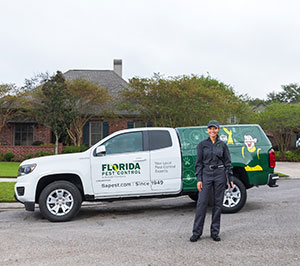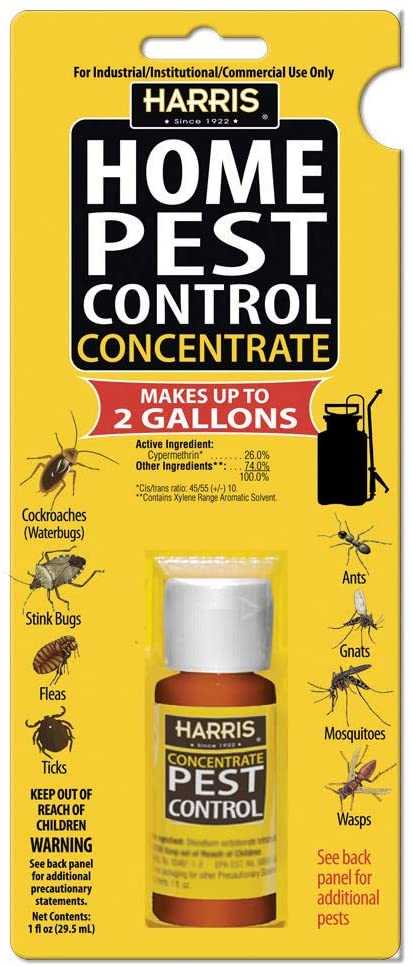Efficient Insect Control Providers: An In-Depth Take A Look At Elimination Techniques and Avoidance Procedures
In the realm of parasite control solutions, the successful monitoring of problems needs a careful method that combines different strategies and steps for both elimination and prevention. From Integrated Bug Administration (IPM) techniques that prioritize sustainable remedies to chemical elimination methods created for targeted removal, the collection versus pests is complex and large.

Integrated Insect Management (IPM) Techniques
Integrated Pest Monitoring (IPM) Approaches incorporate a detailed technique to pest control that concentrates on control, avoidance, and tracking approaches to efficiently take care of insect populaces. By incorporating different methods, IPM intends to reduce the impact of pests while additionally reducing the dependence on chemical pesticides. Prevention lies at the core of IPM, emphasizing practices like correct hygiene, upkeep of hygiene, and securing access factors to hinder pests from infesting buildings.
Chemical Elimination Techniques
Chemical extermination strategies are commonly used in pest control solutions to properly eradicate parasite populaces that position a hazard to human health and wellness and home. These strategies involve the use of different chemical materials particularly developed to target and get rid of parasites such as bugs, rodents, and various other unwanted animals. The application of pesticides, pesticides, rodenticides, and other chemical agents is meticulously managed to ensure optimum performance while lessening risks to humans, pets, and the environment.
One of the vital benefits of chemical elimination techniques is their capability to supply fast and targeted results, making them especially beneficial in situations of extreme infestations or immediate parasite control demands - a1 bed bugs exterminator portland. Nonetheless, it is necessary to highlight the value of correct handling, application, and disposal of these chemical items to protect against unplanned injury
In addition, incorporated parasite management (IPM) techniques frequently integrate chemical elimination techniques with various other techniques such as sanitation, environment modification, and organic controls to produce a extensive and sustainable insect control strategy. By including chemical elimination methods deliberately within an IPM framework, parasite control solutions can effectively take care of pest populations while reducing potential risks to human health and the atmosphere.
Biological Bug Control Methods
Utilizing natural predators and bloodsuckers to take care of parasite populations is a sustainable method called biological pest control. This technique harnesses the natural mechanisms of the ecological community to regulate insect populaces without relying upon synthetic chemicals. One common organic control approach includes introducing all-natural enemies of the target pest types, such as ladybugs for aphid control or nematodes for termite problems. These natural predators prey on the parasites, helping to maintain their populations in check.
Another efficient biological control method is making use of microbial pesticides. These are normally happening bacteria, such as fungi, viruses, and germs, that especially target and infect specific parasite types. By making use of these microbial representatives, bug populations can be properly minimized without triggering or damaging beneficial organisms harm to the environment.
Physical Parasite Avoidance Steps
Carrying out physical parasite prevention measures involves making use of barriers and architectural alterations to deter pests from getting in or infesting a residential or commercial property (a1 portland pest control bed bugs). One reliable approach is securing all prospective entrance factors such as voids around doors, home windows, and energy infiltrations. Installing door moves, screens on windows, and sealing splits in the structure can aid avoid parasites like pests and rats from getting indoors. In addition, keeping a clutter-free and tidy environment is vital as parasites are brought in to food sources and concealing areas. Routinely examining and fixing any kind of broken screens, vents, or roof covering floor tiles can also aid in keeping insects out.
An additional physical avoidance procedure is using barriers like fencing to keep bigger insects such as raccoons or deer away from the home. Installing mesh or wire screens around yards can safeguard plants from being harmed by parasites. Appropriate waste management, consisting of securing trash containers with tight-fitting lids, is necessary in hindering pests like rodents, raccoons, and bugs. By applying these physical bug avoidance actions, residential or commercial property proprietors can considerably lower the danger of pest infestations and explanation the damages they can trigger.
Specialist Pest Assessment Treatments
Performing systematic and thorough insect inspections is an essential facet of specialist pest monitoring methods. Expert bug examiners are educated to diligently examine properties for indicators of invasions, recognizing pest types, entry factors, and conducive problems. The examination procedure typically starts with an extensive assessment of both the interior and outside of the properties. This includes monitoring for bug droppings, chomp marks, nests, and any kind of structural damage that may suggest parasite task. Additionally, inspectors may use specific tools such as wetness meters and borescopes to find surprise infestations within walls or crawl spaces.

Verdict
In conclusion, efficient insect control solutions employ a selection of methods, consisting of Integrated Insect Administration strategies, chemical elimination approaches, biological blog here controls, and physical prevention procedures. Specialist parasite examination procedures play a critical role in recognizing and attending to pest issues in a prompt fashion. By executing a mix of these strategies, building proprietors can successfully manage and stop insect invasions.
From Integrated Insect Management (IPM) methods that prioritize lasting options to chemical elimination techniques created for targeted removal, the toolbox versus bugs is complex and huge.Integrated Pest Monitoring (IPM) Strategies incorporate a comprehensive strategy to pest control that focuses on surveillance, control, and avoidance techniques to properly manage parasite populations.Chemical extermination methods are generally used in bug control services to successfully remove pest populations that pose a threat to human health and residential property.Using all-natural predators and bloodsuckers to handle bug populations is a lasting approach known as biological parasite look at this web-site control.In final thought, efficient insect control solutions employ a selection of methods, including Integrated Bug Administration approaches, chemical extermination techniques, organic controls, and physical prevention actions.